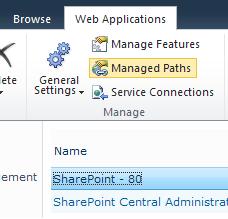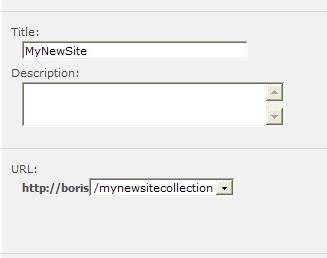Root Level Site Collections
I’m finding a number of good sources on the topic of creating your site collection at the root level of your web applications.
Consider this requirement: In an existing SharePoint operation with a top level site, you need to create a new site collection in a new database with a simple URL like:
http://MyPortal.com/MyNewSiteCollection
Using your standard Central Admin interface, your new site collection will end up under:
http://MyPortal.com/MyNewSiteCollection/Sites or http://MyPortal.com/MyNewSiteCollection/Personal
Well, of course, that because “Sites” and “Personal” are managed paths in the default install. We’ll need to create a new managed path at the server’s root level and then add our site to it.
Our new best friend, Cory, give us a good start here. He explains how to create the site collection using explicit inclusions of both the root and the top level site.
Then, our other new best friend, Ben, explains, here, that what we need is a new managed path using an explicit inclusion.
I’m not sure I absolutely understand the difference, at least in SharePoint 2010.
Like Cory says, the server won’t display the site at the root if it’s configured as a wildcard excusion. For example, I have a site at:
http://MyServer
If I do like Cory says and delete the root managed path and recreate it with a wildcard inclusion, we can see that the root site quits working. Furthermore, no URL defined as a wildcard exclusion will display a site.
So, in Central Admin, I go to Application Management | Manage Web Applications. I select my SharePoint – 80 and click on Managed Paths.
Add my new site with an explicit inclusion and click Add Path:
Then, when you go to Application Management | Create Site Collection, you can see that the managed path is available in the pull down list and that it will create your new site with the template you select at the root of your new managed path.
The next thing we need to do is make sure the database gets built into it’s own distinct database. For this, we visit Application Management | Manage Content Databases. Here we click Add a content database and give the new database an appropriate name. Then we go into all the existing databases and set their Maximum Number of Site Collections to the Current Number of Site Collections. This will assure us that the new site collection gets it’s content written into the new database. After it’s created, change the numbers again to make sure future site collections poke their data into the appropriate database.
hth
-robot
Tags:



